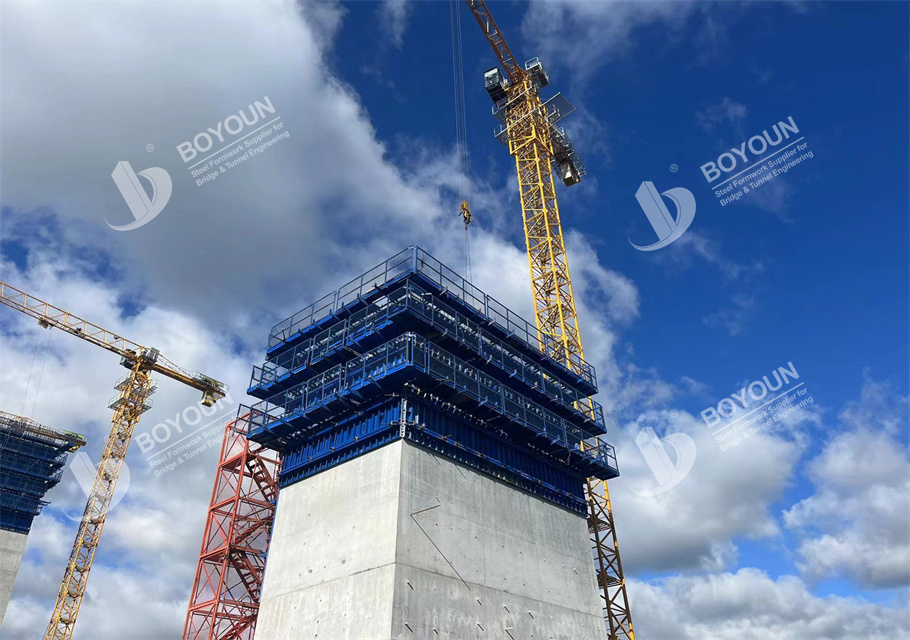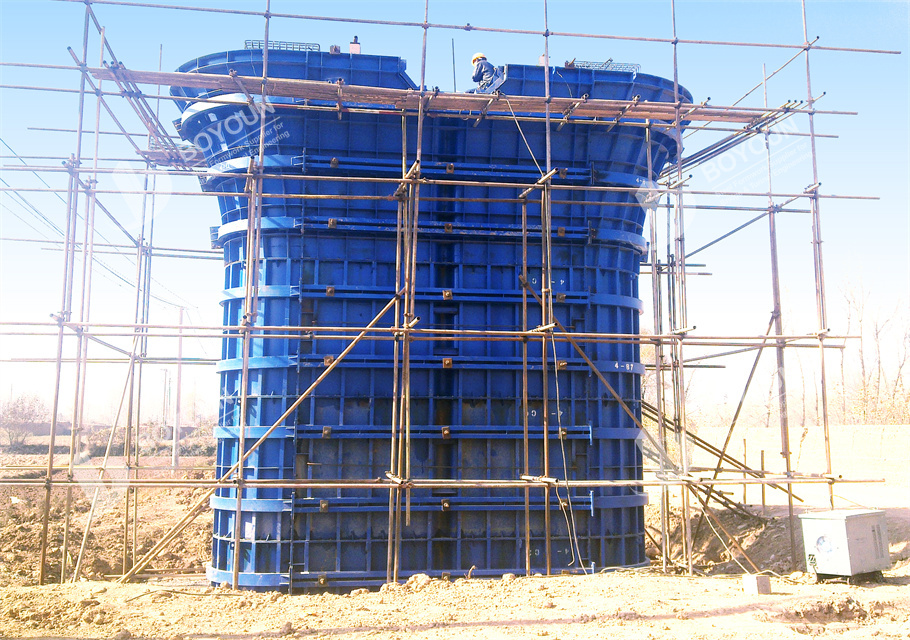The configuration of bridge pier column formwork should follow the following principles:
1. Dimensional Accuracy
The dimensions of the formwork should be fabricated in accordance with the design drawings to ensure that the parameters such as the cross-sectional dimensions and height of the pier column are accurate. The error should be within the acceptable range. Generally, the dimensional deviation should not exceed ±5mm.
The joints of the template should be accurately fitted to prevent slurry leakage during concrete pouring, which could affect the appearance and dimensional accuracy of the pier column.
For special shaped pier columns, the formwork should be customized to meet the design requirements of the pier column. For example, a circular pier column's formwork should ensure its roundness and an elliptical pier column's formwork should ensure its ellipticity.
The curved surface of the pier formwork should be smooth without obvious unevenness to ensure the appearance quality of the pier column.

3. Strength and Stiffness
The pier formwork should have sufficient strength and stiffness to withstand lateral pressure during concrete pouring and various loads during construction. Generally, the strength of the formwork should not be less than 1.5 times the design concrete strength and the stiffness must meet the deformation requirements. The maximum deformation should not exceed 1/400 of the formwork span.
The formwork's strength and stiffness can be improved by selecting appropriate formwork materials and strengthening the structural design of the formwork.
II. Adapting to Construction Conditions
1. Construction Method
Select the appropriate formwork for the construction method of the bridge pier column. For example, for pier columns using slip-form construction, slip-form formwork should be selected; for pier columns using turnover-form construction, turnover-form formwork should be selected; for pier columns using climbing-form construction, climbing- form formwork should be selected.
Different construction methods have different requirements for templates, and the selection should be made based on the actual situation to ensure the smooth progress of construction.

2. Construction Progress
The number of configured formwork should be determined based on the construction progress plan to ensure that the construction requirements are met. Generally, the number of configured formwork should ensure that one pier column can be completed within one construction cycle. At the same time, the turnover usage of the formwork should also be taken into account.
The construction progress can be accelerated by arranging the construction sequence and improving the formwork turnover efficiency.
3. Construction Environment
Consider the impact of the construction environment on the formwork and select a suitable formwork for local climatic conditions and construction site conditions. For example, in high temperature and high humidity areas, corrosion resistant and moisture proof formwork materials should be selected; in mountainous areas, river valleys, and other areas with complex terrain, formwork that are easy to transport and install should be selected.
The construction environment also includes traffic conditions, water and electricity supply at the construction site, etc. These factors should be comprehensively considered to select an appropriate template configuration plan.
III. Economic Rationality
1. Formwork Cost
Based on meeting design requirements and construction conditions, choose a formwork with a lower cost. The most cost-effective formwork configuration plan can be selected by comparing the prices of different formwork materials and different formwork structures.
The cost of the formwork includes not only the purchase cost but also transportation costs, installation costs, and demolition costs. These cost factors should be comprehensively considered to select an economically reasonable template configuration plan.
2. Formwork Turnover Times
Improving the formwork's turnover time can reduce its usage cost. The turnover times of the template can be extended by selecting high-quality and durable formwork materials and strengthening the maintenance of the formwork.
In the formwork configuration plan, the use order of the formwork should be arranged to minimize its idle time and improve the formwork's turnover efficiency.
3. Resource Utilization Efficiency
In the formwork configuration plan, full consideration should be given to resource utilization efficiency to minimize formwork waste. The universality and interchangeability of the formwork can be improved by optimizing the formwork design and adopting standardized and modular formwork structures to reduce the amount of formwork production and processing.
For waste formwork, they should be recycled and reused to reduce resource consumption and environmental pollution.
IV. Safety and Reliability
1.Formwork Stability
The formwork should have sufficient stability to remain sturdy and reliable during construction. The formwork's stability can be improved by strengthening the formwork's support system and setting anti-wind cables.
During the installation and demolition of the formwork, the operation should be carried out strictly in accordance with the operating procedures to ensure the safety of construction personnel.
2. Formwork Safety
The formwork must meet the safety standards and specifications for formwork to ensure its safety . For example, protective railings should be placed at the edges of the template to prevent construction personnel from falling, and safety pins should be set at the joints of the formwork to prevent the formwork from falling off during construction.
The formwork should be regularly inspected and maintained, and potential safety hazards should be addressed in a timely manner during use.
In conclusion, the bridge pier column formwork should follow the principles of meeting design requirements, adapting to construction conditions, being economically reasonable, and being safe and reliable. Appropriate template types and configuration plans should be selected to guarantee the quality and safety of bridge pier columns.

International Department: Room 2507-2508, Tower C of Wanda Plaza, Tongzhou District, Beijing 101118, China.
+86-13021287080
info@boyoun.cn